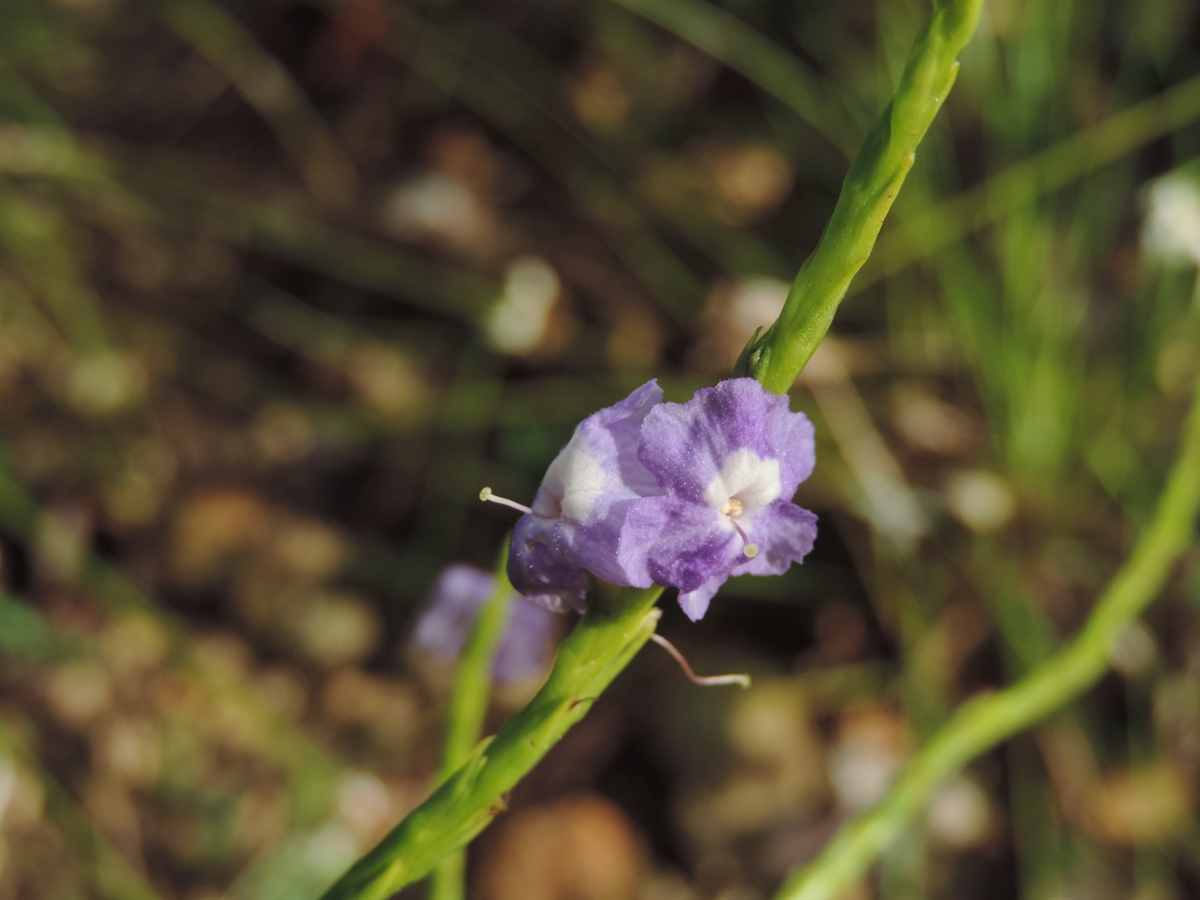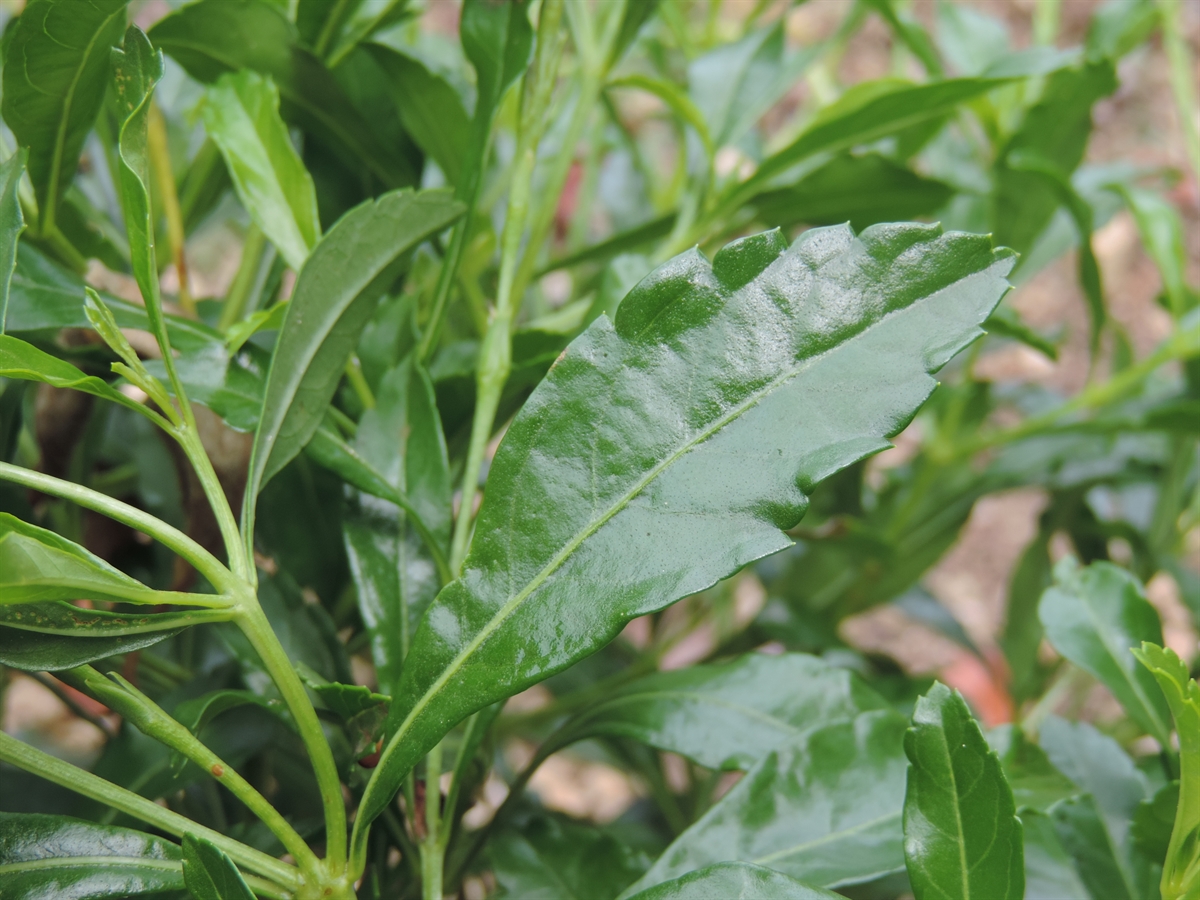Habit: Stachytarpheta fruticosa grows as a woody shrub up to 2 meters in height. The leaves are arranged oppositely and are up to 9 cm long. The leaves are ovate to elliptic in shape with a crenate/toothed leaf margin along the leaves upper half. The stems and leaves are covered with small hairs and are typically square in cross section.
The complete, perfect, zygomorphic flowers are arranged in terminal spikes that are up to 50 cm long, usually shorter. The flowers open continuously for months with 2-3 new flowers appearing every few days. The calyx has 5 fused, green sepals. The corolla has 5 fused petals that are a purplish blue that can range from a dark to light coloration. There are 4 stamens fused to the corolla. The ovary is superior with two locules. The fruit is a capsule.
Habitat: Stachytarpheta fruticosa grows in Human Altered areas, salt flats, Ephemeral Fresh Water Wetlands, savannahs, and the edges of Dry Broadleaf Evergreen Formations (coppice).
Distribution: Stachytarpheta fruticosa is endemic to the Lucayan Archipelago and Cuba and occurs throughout the islands.
Medicinal/Cultural/Economic usage: Stachytarpheta fruticosa is not known to be used medicinally in the Lucayan Archipelago.
It is listed by the International Union for the Conservation of Nature (IUCN) as a species of Least Concern due to extensive populations across the Lucayan Archipelago and Cuba.



